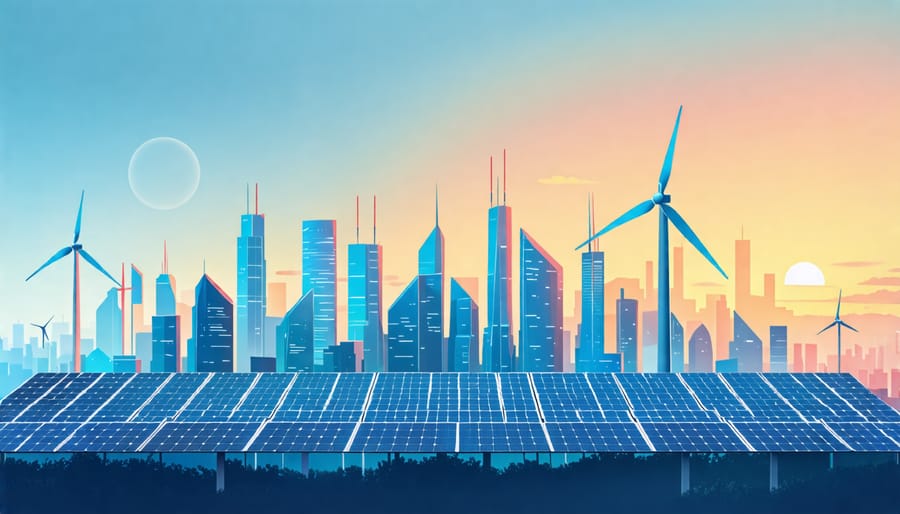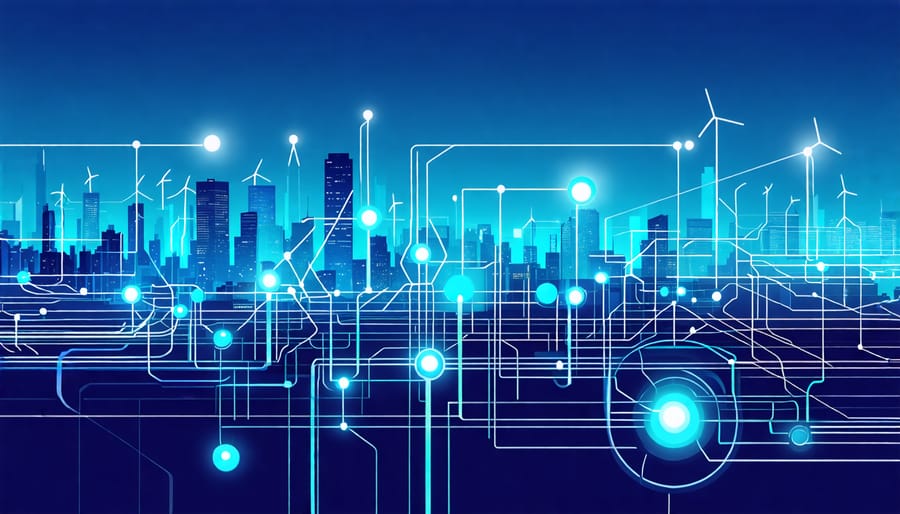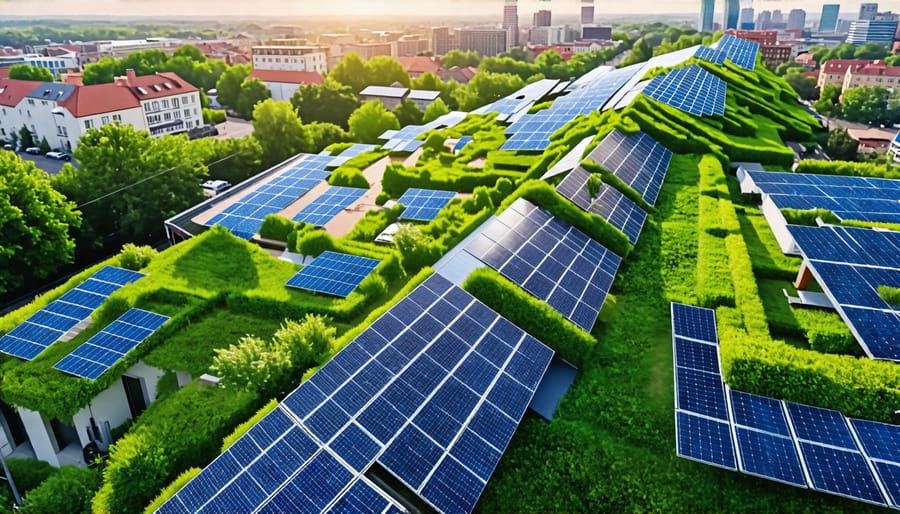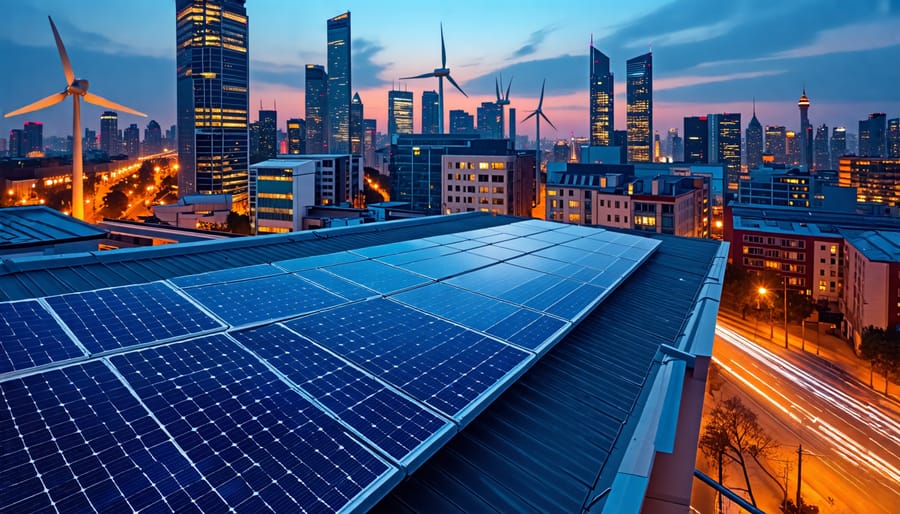Implement smart grid technologies to optimize energy distribution and improve grid reliability. Leverage renewable energy sources, such as solar panels and wind turbines, to reduce carbon footprints and enhance sustainability. Invest in energy-efficient building designs and materials to significantly lower consumption and operational costs. Integrate energy storage systems to manage demand fluctuations and ensure a stable energy supply for urban infrastructure.
Why Urban Energy Solutions Matter
The Urbanization Challenge
Rapid urbanization poses significant challenges for energy infrastructures and the environment as cities expand and populations grow. The increasing demand for energy drives the need for more sustainable and efficient solutions, requiring construction professionals to rethink traditional practices. As urban areas become densely populated, the pressure on existing power grids intensifies, often leading to outages and inefficiencies. This necessitates advancements in energy management systems and infrastructure upgrades.
Environmental impacts are also profound, as the rise in construction activities and energy consumption contributes to higher carbon emissions and ecological degradation. In response, cities are turning to smart grid technologies and decentralized energy systems to enhance resilience and sustainability. Innovative approaches, such as integrating renewable energy sources and implementing energy-efficient building designs, play crucial roles in mitigating these effects. Real-world case studies reveal that collaborations between urban planners, engineers, and architects are essential to develop holistic urban energy strategies that balance growth with environmental stewardship.
Sustainability Imperatives
In an era where urban landscapes are expanding rapidly, integrating sustainability into urban energy solutions is an imperative to mitigate the impacts of climate change. For construction professionals and industry leaders, this means rethinking traditional energy strategies and embracing innovations that reduce carbon footprints and enhance efficiency. Urban energy solutions like smart grids, renewable energy integration, and energy-efficient building designs are pivotal in this transition. Smart grids facilitate real-time energy management, optimizing consumption patterns and reducing waste. Incorporating renewable energy sources—such as solar panels and wind turbines—not only diversifies energy supply but also significantly lowers greenhouse gas emissions.
Case studies reveal that cities implementing these solutions often experience reduced energy costs and improved air quality, creating healthier urban environments. Experts in the field emphasize the role of cross-sector collaboration in achieving these goals. By prioritizing sustainability, industry professionals can lead the effort to develop resilient energy systems that support both environmental and urban resilience, fulfilling critical climate targets while fostering innovation in urban design.
Innovative Technologies in Urban Energy
Renewable Energy Integration
Integrating renewable energy sources into urban environments is pivotal in transforming cities into sustainable hubs. Solar panels on rooftops maximize energy absorption in densely populated areas, offering a decentralized solution for power generation. Advanced photovoltaic technologies now cater to efficiency needs, even in varied weather conditions. Urban wind turbines stand as another innovative solution, particularly suitable for high-rise buildings where wind speeds are optimized. These vertical turbines are quieter and more aesthetically pleasing, aligning with urban planning aesthetics.
For a seamless integration, synergy between architectures, such as building-integrated photovoltaics (BIPV), and urban design is crucial. BIPV systems replace conventional building materials, thus serving dual functions of energy generation and aesthetics. Expert interviews reveal a rising trend in microgrid implementation, facilitating localized energy management and balancing supply-demand effectively. Moreover, case studies highlight projects like the Pearl River Tower in China, which employ integrated wind energy systems, showcasing how buildings can be self-sustaining while reducing grid dependency.
However, challenges remain in adopting these technologies at scale due to regulatory hurdles, initial costs, and existing urban infrastructure constraints. Overcoming these barriers requires a collaborative approach between policymakers, architects, and developers, ensuring that renewable integration becomes a standard practice in urban planning. As cities strive towards energy independence, embracing renewables will undoubtedly be at the forefront of urban energy solutions.


Smart Grid Technologies
In the rapidly evolving landscape of urban energy solutions, smart grid technologies are at the forefront, transforming how cities manage and distribute electricity. These systems integrate advanced communication, information, and energy infrastructure to elevate efficiency, reliability, and sustainability in urban settings.
One of the primary advantages of smart grids is their ability to optimize energy distribution in real-time. By utilizing data analytics and predictive algorithms, smart grids can balance supply and demand effectively, reducing energy losses and enhancing grid stability. This results in a more resilient energy network that can adapt to fluctuations and mitigate the impact of outages, benefiting both consumers and providers.
Moreover, smart grids support the integration of renewable energy sources such as solar and wind. Through advanced monitoring and control systems, these networks can seamlessly incorporate distributed energy resources, ensuring a consistent and clean energy supply. This integration is vital for reducing urban carbon footprints and supporting sustainability goals.
A notable implementation of smart grid technologies can be observed in smart city infrastructure, where cities are leveraging these systems to foster innovation and improve urban living. These initiatives demonstrate the potential for smart grids to revolutionize urban energy management by enhancing transparency, facilitating energy trading, and empowering consumers with more control over their energy use.
For construction professionals and decision-makers, the adoption of smart grid technologies poses both opportunities and challenges. Successful deployment requires collaboration across sectors, investment in robust cyber security measures, and ongoing adaptation to technological advancements. Engaging with expert insights and real-world case studies can provide valuable knowledge, helping industry stakeholders navigate these complexities and harness the full potential of smart grids in contemporary urban settings. Ultimately, smart grids are not merely an addition to urban energy management but a cornerstone for future-ready, adaptable cities.
Case Studies: Successful Urban Energy Projects

Green Cities Initiative
Vancouver stands out as a pioneer in urban energy strategies, implementing the Greenest City Action Plan, which aims for carbon neutrality by 2050. This comprehensive approach has transformed how the city integrates renewable energy solutions within its urban framework. Vancouver harnesses green power through solar, wind, and hydroelectric systems, optimizing energy use and reducing reliance on fossil fuels. The city’s district energy systems leverage waste heat from buildings, turning it into a valuable resource for heating and cooling. An interview with Patricia Jameson, a lead urban planner in Vancouver, emphasized the importance of collaboration between public and private sectors in achieving these goals. She noted that early involvement of stakeholders accelerates the adoption of innovative technologies and improves infrastructure resilience. Vancouver’s commitment to green technologies highlights the potential of sustainable energy solutions in decreasing environmental impact while maintaining urban growth, setting an exemplary model for cities worldwide.
Community-Driven Solutions
Urban energy solutions increasingly rely on the ingenuity and collaboration of local communities harnessing their unique resources to improve energy efficiency. One notable example is the community solar project in Portland, Oregon, where residents collectively invest in shared solar arrays. This model empowers neighborhoods to produce renewable energy at reduced costs, fostering local ownership and sustainability.
Additionally, in both Southern California and Phoenix, Arizona, community-driven initiatives have successfully implemented energy-efficient retrofitting in residential areas. By organizing cooperatives, they streamline processes for procuring sustainable materials and engaging skilled contractors, ensuring that efficiency upgrades are accessible and cost-effective for homeowners. These projects highlight the critical role of community engagement, emphasizing the importance of localized solutions in achieving broader energy goals.
Expert interviews underscore that fostering community-driven efforts can enhance urban energy strategies by promoting grassroots innovation and resilience. These collective initiatives not only address immediate energy needs but also cultivate a culture of sustainability that aligns with both regional and global environmental objectives. Engaging communities as active participants in these projects paves the way for transformative urban energy solutions that are both efficient and inclusive.
Challenges and Opportunities
As urban areas continue to expand, the push for sustainable energy solutions presents both complex challenges and compelling opportunities. The primary obstacles include the adaptation of existing infrastructure and the integration of innovative technologies into urban settings, which often means significant upfront investments. Moreover, regulatory hurdles and varying standards can delay implementation, creating an uneven landscape for adopting advancements. Despite these challenges, the potential for urban energy solutions to contribute to more sustainable cities is immense.
Implementations such as energy-efficient retrofits offer a glimpse into the transformative power of modern technology in enhancing building performance. Additionally, the integration of smart grid technologies facilitates real-time energy management, reducing waste, and lowering costs. On a larger scale, such advancements can stimulate economic growth by fostering new markets and job opportunities in urban area developments.
Moreover, collaborative efforts from construction professionals, architects, and engineers offer the potential to overcome these challenges. By engaging in expert dialogue and leveraging data-driven insights, industry leaders can pioneer innovative solutions tailored to specific urban needs. In doing so, the adoption of sustainable energy practices in urban settings can become not just feasible but also highly beneficial, paving the way for a more resilient and ecologically conscious urban future.
Conclusion
In conclusion, adopting effective urban energy solutions is crucial for constructing a more sustainable future. As discussed, integrating innovative technologies such as renewable energy systems, energy-efficient building designs, and smart grid technologies is essential. These solutions not only reduce environmental impact but also enhance economic viability and resilience in urban developments. Insights from expert interviews and in-depth case studies show the significant strides being made in overcoming challenges related to implementation and cost. To remain competitive and responsible, industry decision-makers, architects, engineers, and project managers must prioritize sustainable practices, ensuring cities are prepared for future energy demands and environmental responsibilities.

